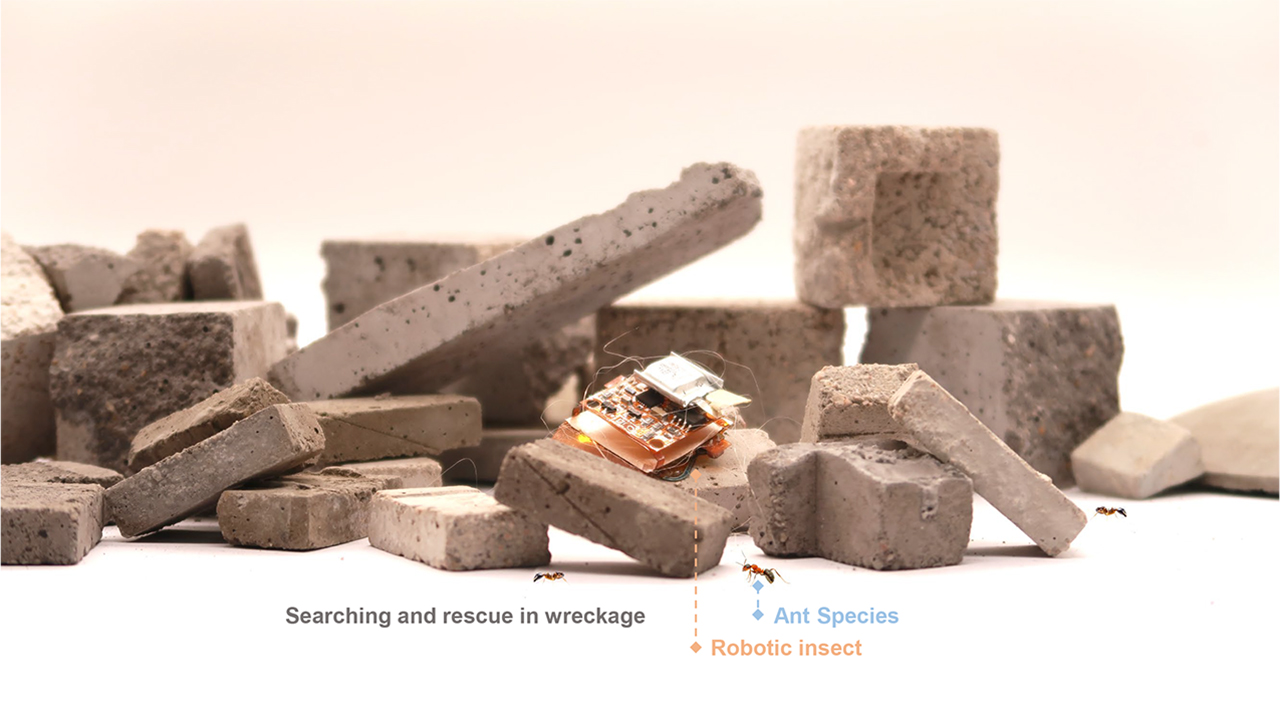 Robotic insects with ultrahigh agility
Robotic insects with ultrahigh agility
Inspired by agile insects in nature, a research team led by Prof Zhong Junwen, assistant professor in the Faculty of Science and Technology (FST) of the University of Macau (UM) and a member of the Centre for Artificial Intelligence and Robotics of UM, has developed robotic insects that are only 3cm long with ultrahigh agility and a controlled trajectory. The study has been published in Science Robotics, the top journal in the field of robotics. This is the first time that a research study by Macao scholars has been published in this journal. So far, the journal has published less than ten papers from higher education institutions in the Guangdong-Hong Kong-Macao Greater Bay Area.
In nature, animals that are fast and agile often have a survival advantage. A key fundamental challenge in this study is to develop insect-scale soft robots with ultrahigh agility and good trajectory control comparable to those of real agile insects, and the technical difficulty lies in achieving a fast linear moving speed while maintaining the capability of the robots to make turns. In nature, insects with flexible bodies can dynamically tune the friction force with secretions between their feet and the ground to improve locomotion. In this study, Prof Zhong’s team emulated similar schemes by adjusting the electrostatic force between the robot’s feet and the ground to achieve both ultrahigh agility and a controlled trajectory. The soft robots developed by the team can reach a highest relative centripetal acceleration of 28 body-length/s2, which is better than that of common insects. Through a series of demonstrations, the team has proved that the soft robots can pass through a 120cm-long track in a maze within 5.6 seconds and carry a 180mg on-board sensor to record a gas concentration route map.
Furthermore, the team has also developed an untethered version of the soft robot, which is battery-powered and can complete a 27.9cm-long S-shape path in 36.9 seconds. An important potential application for such robots is that after a disaster such as an earthquake, a large number of these robots can carry sensors that can move swiftly through the rubble and record and transmit valuable information during the search and rescue process. The related paper, Titled ‘Electrostatic Footpads Enable Agile Insect-scale Soft Robots with Trajectory Control’, is the result of collaboration between UM, Tsinghua University, and the University of California, Berkeley.
Prof Zhong obtained a PhD degree in electrical science and engineering from Huazhong University of Science and Technology in 2016. After graduation, he continued with his research at the University of California, Berkeley, and the Japanese Institute of Physics and Chemistry. In recent years, he has published more than 50 academic papers in internationally renowned journals, with a total of over 4,000 citations. His main research interest is flexible electromechanical systems, particularly flexible robots, flexible sensors, and actuators. full version of the paper can be viewed at:https://robotics.sciencemag.org/content/6/55/eabe7906



